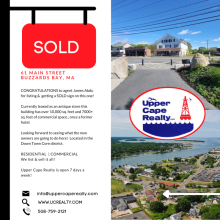Due north: Mattapoisett compass adjuster keeps boats on course
For 30 years, compasses have guided Ray Andrews from the frigid waters of Alaska to the warm waves of Guam.
Since 1984, Andrews has run Andrews Compass Service, a one-man compass adjustment business, from his native Mattapoisett.
“The nature of the business is to determine deviations on magnetic compasses on board boats,” said Andrews. “So if you want to go north, south, east or west, you go north, south east, or west.”
Andrews knows how important it is to keep a boat on course. Before repairing compasses, he was a professional yacht captain.
“I spent from 1977 to 1982 off the Caribbean, the Bahamas and going transatlantic skippering boats,” he said.
While looking for a new boat to captain, Andrews heard about the chance to apprentice and buy out a compass adjustment business.
“I was 31 at the time,” said Andrews. “It was a good opportunity to come ashore.”
Andrews spent four months learning the trade and a year running the business before he took over.
Since then, Andrews estimates that he’s worked on at least 6,500 boats, adjusting magnetic compasses on everything from small powerboats to a 937-foot tanker.
Andrews said GPS and electrically powered compasses are good navigation tools, but if inclement weather hits or the electricity quits, a properly adjusted magnetic compass is crucial to getting a boat safely to shore.
“Compasses are as unique to boats as boats are to compasses,” said Andrews, and the factors that cause them to give incorrect readings are equally idiosyncratic.
Andrews said soft irons, which can be found in speakers, a propane tank and anything with a power supply, cause throw off the reading of a magnetic compass.
“Everybody has a unique fingerprint, every boat has a unique magnetic fingerprint,” said Andrews. “The job of a compass adjuster is to compensate the compass or to remove that error.”
Andrews uses a directional gyro, originally used to navigate a 1945 B52 bomber plane, to determine the correct direction. With the instrument, he can correct a faulty compass within a quarter to a half of a degree’s accuracy.
“With a directional gyro I can do an adjustment in pea soup fog, a blizzard, in the pouring rain. My latest adjustment was at one in the morning,” said Andrews.
Andrews estimates that there are only 75 to 100 full-time adjusters left in the country and few of them travel long distance to jobs.
“You cannot adjust the compass on my workbench,” said Andrews. “The boat has to be on the water, underway. The compass adjuster has to go to the boat.”
As one of the few willing to travel, Andrews has been flown to Alaska to adjust the compass of a liquefied natural gas tanker as well as to Guam to work on military vessels.
Despite hours spent traveling over land and sea to get to his next job, Andrews said adjusting compasses is a quick process. Smaller vessels might take 15 to 35 minutes and even the 937-foot tanker was only a three-hour job.
Still, Andrews said few adjusters have the knowhow to tackle the variety of ships, especially the large commercial vessels, that send him all over the country.
“It’s an expertise that’s been developed over the years. It’s really a thing of experience.”















